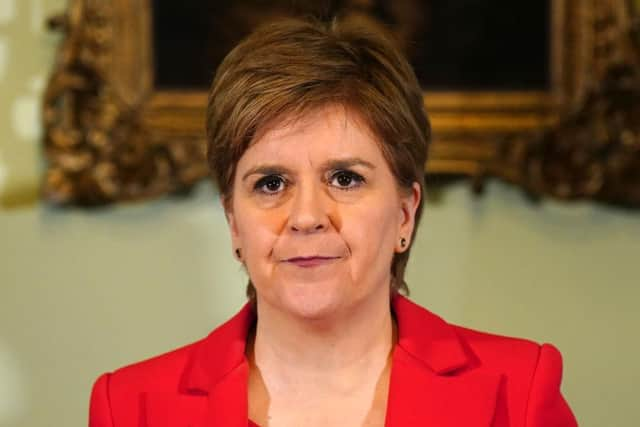How the SNP will choose Nicola Sturgeon's successor - and the challenges facing the party
She was elected unopposed in 2014, ascending to the top job in the aftermath of the bruising independence referendum defeat. It was a decade before then that John Swinney’s resignation as first minister prompted the last real race.
Scotland has changed considerably over that period, but the changes in the SNP have been even more pronounced. What was once a party accustomed to disappointment at the polls, with less than 9,500 members, has been transformed into an electoral juggernaut, one that has occupied the seat of government in Edinburgh for close to 16 years.
Advertisement
Hide AdAdvertisement
Hide AdBut it will not be the electorate at large who determines Ms Sturgeon’s successor. That job will fall to the SNP’s membership, whose ranks have jumped dramatically to around 104,000. A timetable for that process has yet to be set out by the party’s national executive committee (NEC). But if 2004 is any guide, it could take several weeks before Scotland’s sixth first minister – and the 15th leader of the SNP – is known.
A spokesman for the party said following Ms Sturgeon's announcement, the NEC will agree a timetable for all SNP members to be able to choose a new party leader “in line with the process set out in the SNP constitution”. Should there be a contest with two or more applicants, he added, then the selection of the new leader will be held on a democratic one-member-one-vote basis.
The last time that happened, three candidates were nominated. Alex Salmond commanded more than three quarters of the votes, pushing Roseanna Cunningham and Mike Russell into a distant second and third respectively. Back then, nominations opened on June 22, the same day Mr Swinney resigned, with voting getting underway more than seven weeks later. The results were not announced until September 3, meaning the entire process took nearly 11 weeks to play out.
If the timescale is similar this time around, it poses awkward questions for the SNP. It would mean, for example, the party would hold a special conference to set out a “clear path” on Scotland’s constitutional future at a time while it is engaged in a leadership contest. Some in the party have called for that event to be postponed.
But arguably the biggest challenge facing the SNP is electing a leader everyone in the party can unite behind. Not only is there no single dominant candidate for the leadership, as was the case when Ms Sturgeon became first minister, there is not even a clear favourite, and many in the party’s grassroots have been dissatisfied with its approach to independence.


A Panelbase poll conducted last week for the Sunday Times asked Scottish voters the prescient question of who should replace Ms Sturgeon. The results were seized upon by the SNP’s critics as an example of its succession problems, with 69 per cent of respondents in the survey of 1,415 voters saying that they didn’t know.
For close to a generation now, the SNP has occupied a commanding role in Scottish politics, but Ms Sturgeon’s shock resignation has brought her party to a crossroads. The road ahead is far from certain.
Comments
Want to join the conversation? Please or to comment on this article.